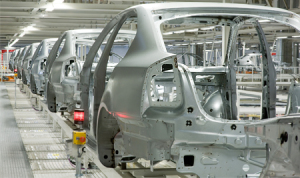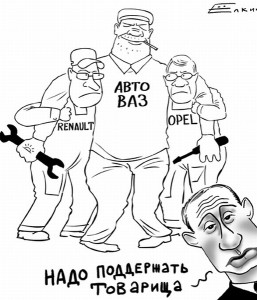 The automotive market is one of the indicators of well-being of a country’s economy, and Russia is no exception. In 1994 there were 11.5 million passenger cars driving on Russian roads. Only 0.6 million, or 5% of those passenger cars, had been produced abroad. At the beginning of 2015 estimated Russian passenger fleet is 40.85 million vehicles, 22.5 million of which (about 55%) are foreign-made cars. Thus, over the past 20 years, the total number of passenger cars increased by almost 4 times, and the number of foreign-made cars increased by 38 times.
The automotive market is one of the indicators of well-being of a country’s economy, and Russia is no exception. In 1994 there were 11.5 million passenger cars driving on Russian roads. Only 0.6 million, or 5% of those passenger cars, had been produced abroad. At the beginning of 2015 estimated Russian passenger fleet is 40.85 million vehicles, 22.5 million of which (about 55%) are foreign-made cars. Thus, over the past 20 years, the total number of passenger cars increased by almost 4 times, and the number of foreign-made cars increased by 38 times.
An automobile is a complex and expensive commodity with a high demand. Automotive manufacture involves many industries, which can be viewed as a long “food chain”. This “food chain” consists of both high technologies and suppliers of various raw materials (metallurgical, chemical, textile). Car owner is perceived as a typical representative of the “middle class”. Economic models, forecasts, and projections are built upon the analysis of sales of cars to these “middle class” owners. Russian state has always been supporting domestic automotive industry and trying to keep it alive in the hardest times. High tariffs on imported foreign cars forced automakers to place their assembly plants in the territory of Russia.
“Man-made” economic crisis in Russia, which arose as a result of the aggressive foreign policy of the Kremlin, hit country’s auto market. According to experts, at the beginning of the second quarter of 2015 the auto market reached its bottom. The figures are depressing: in April 2015 nearly 100.000 less cars were sold than in the same month of 2014. It represents the lowest record of car sales over the last 10 years.
Russian government is trying to confront today’s crisis by investing 25 billion rubles of budgetary resources into an automobile industry support program. This money is planned to be spent on the disposal of the old cars and preferential loans for buyers of new cars, i.e. for the compensation of interest on loans. The preferential program works only towards buyers of cars produced in Russia. In addition, extra billions of rubles are allocated for the purchase of vehicles by the federal government and the municipalities for the needs of public transportation. However, even the Ministry of Industry and Trade recognizes that such a measure would help market not to fall by 50%, but only by 24% – a very disappointing forecast.
The state’s fight with the decline of the car sales is developing while major foreign auto producers announce their withdrawal from the Russian market. In March 2015 General Motors announced that it is closing its assembly plants in St. Petersburg, Kaliningrad, and Nizhny Novgorod. It was also announced that the production of car brands Opel and Chevrolet in Russia will be ceased by the end of the year. Company’s president Dan Ammann said bluntly that “the situation does not justify the substantial investment in the market with no clear long-term perspective”.

Of course, Russian officials, including Putin’s press secretary Dmitry Peskov, were quick to say that they do not expect other automakers to leave Russia, and the current turmoil in the auto market will be followed by a “rapid growth”. However, the outflow did not begin with General Motors, and it did not start yesterday. At the end of 2014 spanish “SEAT” quietly folded its operations in Russia. Taiwanese “Luxgen” lasted only for 2 years and left Russia about the same time as “SEAT”. South Korean “Ssang Young” also suspended its Russian projects.
Decreased production of vehicles leads to a reduction of a large number of jobs, not only at the auto plants, but also in related industries, for example in metallurgy and petrochemical industries, which produce metal for car bodies and the rubber for tires. Even the Federal State Statistics Service reports a sudden and unexpected downturn in the industry, which is characterized as “a balance between stagnation and recession”
What else can you set against the crisis? The current head of “AvtoVAZ”, Swede, Bo Andersson, is going to ask Russian government to increase import duties on foreign cars. This failsafe “competitive” mechanism was repeatedly tested in Russia. Moreover, it fits well in the new patriotic import substitution. Where will this “new” policy lead is not difficult to predict – the present repeats the past. During the Soviet era, 25 years ago, people had to get in line and wait for several years to buy an antediluvian “Lada”. Even more antediluvian and also eternally breaking “Moskvich” could be purchased quickly, however it took the same time to make all the repairs as to wait for a difficult-to-obtain “Lada”. However, during those years, people being deprived of cars could at least be proud of the best in the world spacecrafts “Progress” and “Proton”, reliably delivering cargo and satellites into the orbit. Today the situation in the Russian space industry is quite different, but we will talk about that in a week.





